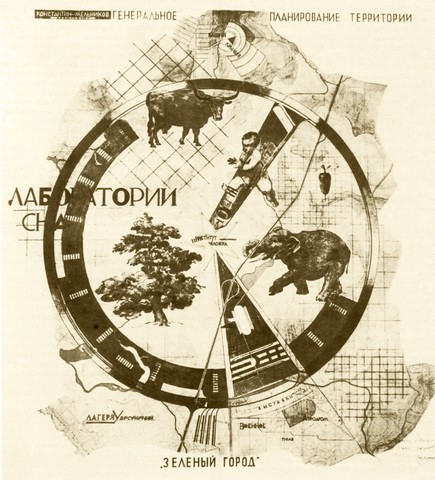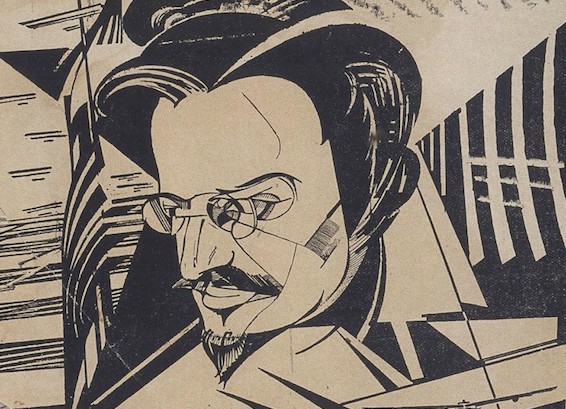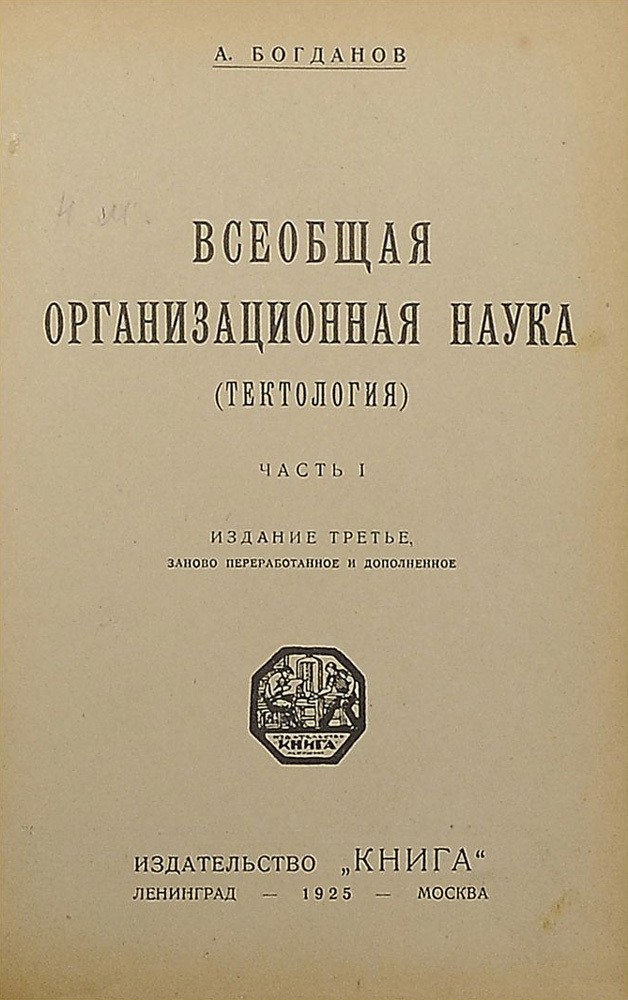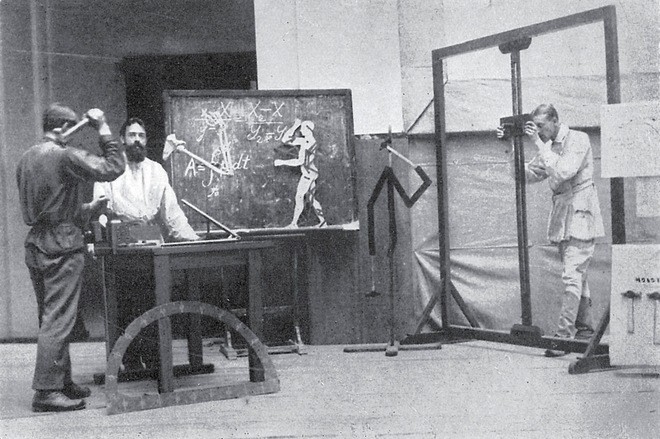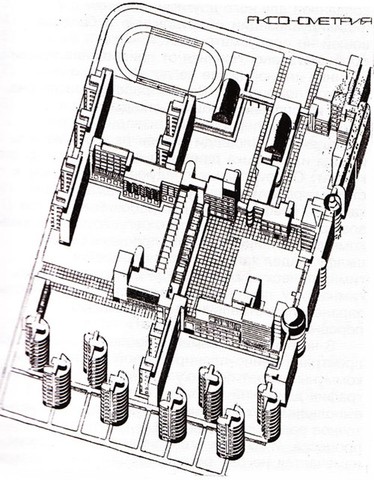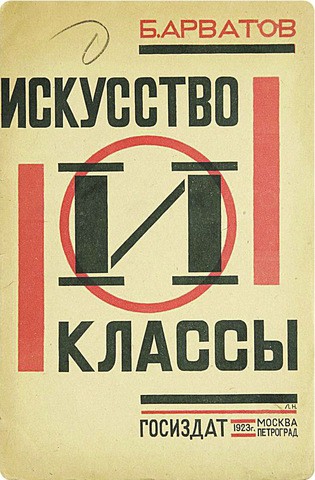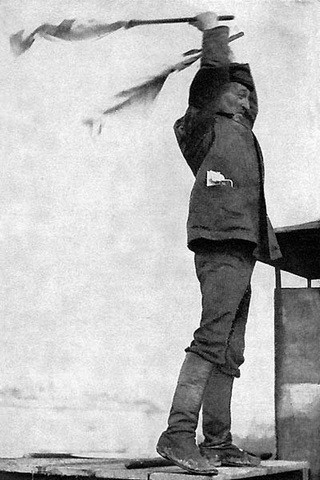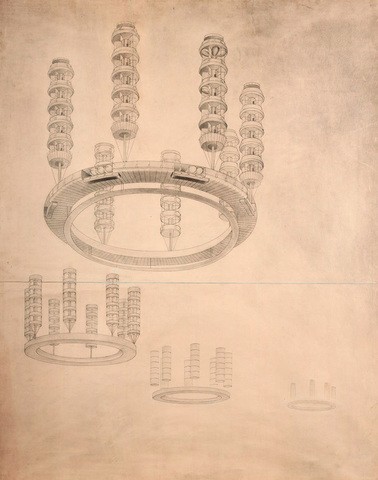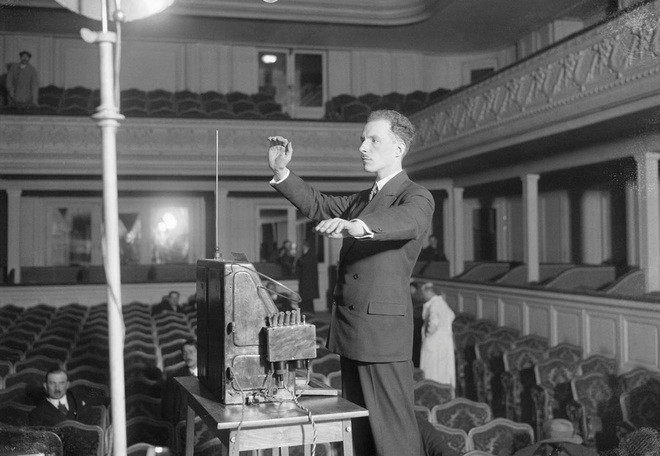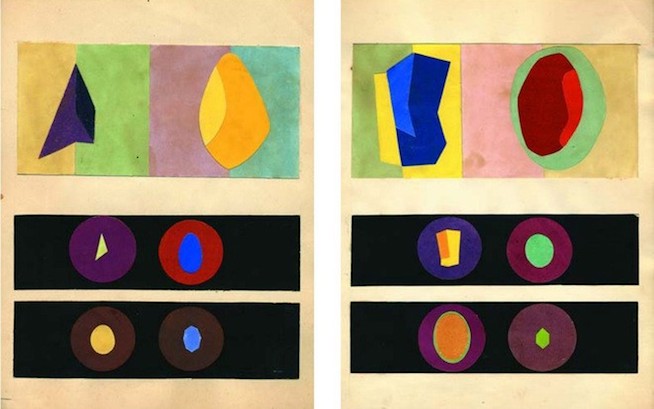To mark release of the reader by Boris Arvatov, one of the founders of the LEF Association (Left Front of Art), in V-A-C Publishing House, Alexandra Selivanova selected ten projects by avant-garde ideologists, who proposed to make fundamental changes in a Soviet citizen’s life, as well as all field of art.
1
Konstantin Melnikov and Sleep Reform
“And now if I hear that good health requires nourishment, I say – no – it requires SLEEP. Everyone says that recreation requires fresh air; wrong again — I believe that fresh air is unable to recharge our energies without sleep… I design pleasure-domes and chambers for triumphant SLEEP; they host five types of impact: PHYSICS — from pressure and humidity of air, water flows with massage to heel scratching; THERMAL chambers — from heat of Russian kamenkas (stoves in bath houses) to sever frosts; CHEMISTRY — aromas of woodlands, meadows, sweet-smelling hay, spring, and autumn; MECHANICS — with beds in spinning, twitching, rocking, tripping motions; MENTALITY — sound of leaves, beating of sea waves, thunder storm, nightingales, reading, music… Doctors were entertained with the project; and today healthcare shifts its methods closer to sleep as to a healing spring… and I believe that my project and I are not that far, and soon science and technology will get assistance from a poet and a musician together with a human being; and they will complete my dream – to build a SLEEPing Sonate.”
Konstantin Melnikov. The City of rational recreation, 1930
Competitive design of a recreation city near Moscow: the Green city by Konstantin Melnikov. 1929–1930 Academy of Architecture and Arts of the Southern Federal University / StudFiles
The great Soviet avant-garde architect considered sleep to be an essential part of human life. The bedroom he designed in his house in Krivoarbatsky Lane represented a space without a single square corner, with partitions smoothly flowing from floor to ceiling. Beds, tiding up from the floor, were intended as monolithic sculptures. The walls were painted with ocher: from Melnikov’s point of view, such color inspired golden dreams.
In 1929–30, Melnikov worked out the SLEEPing Chamber Project to bid for design of the Green City, a recreation city near Moscow; he proposed to rationalize recreation process through transformational arrangement of collective sleep, including inclination of floor in chambers, background sounds, scents, humidity and temperature.
Gardens, children's playgrounds, a forest, a zoo, a recreation hall, tourist pavilions, mobile restaurants and cafes, libraries and sports equipment distribution points were all located within a ring of highways; and the Institute of Man was right in the middle. Twelve buildings of the Sleep Lab, in which 4,000 people were supposed to sleep at the same time, were located circle-wise in a forest. The professional community started discussing construction of such centers throughout the country, but in 1931 the project was closed due to city-planning debates and persecution of avant-garde that had begun. Six years later Melnikov, or “a stuntman”, “a magician” and “a formalist”, as the Soviet mass media called him then, was dismissed from his position of the head of the architectural and design workshop No.7 of the Moscow City Council and, in fact, deprived of any orders. Everything he designed for the rest of his life was only accumulating in the drawer of his table.
2
Leon Trotsky and a New Mode of Living
“Will the revolution provide a new mode of living? Why not, for sure it will. However such mode of living, just as the public in general, will not be formed in a blind way, as coral reefs are, but built in a conscious manner, examined thoughtfully, guided and adjusted. When mode of life ceases to be spontaneous, it ceases to be stagnant as well. When a man begins to raise palaces on the summit of Mont Blanc and at the bottom of the Atlantic, regulate love, nourishment and cultivation of personality, taking the average human type up to the level of Aristotle, Goethe and Marx, he will add brightness, wealth, intensity, as well as the highest dynamism to his life. Hardly shaped up, the shell of life will burst under the pressure of new technical and cultural inventions and biopsychic achievements.”
Leon Trotsky. “Problems of culture. Culture in transition”, 1927
Leon Trotsky. A drawing by Yuri Annenkov. 1922 © Private collection / Diomedia
It is commonly believed that in the 1920s the Government did not show any support to avant-garde leaders: both Lenin and Stalin were rather conservative. However, one man among the Revolution masterminds was open to a new culture and played significant role in the most drastic artistic endeavours.
Seeing a human being as a subject and an object of Socialistic art, Leon Trotsky’s rhetoric included statements on requirement to reform daily routine, mode of life and consciousness by hands of architects, city planners, engineers and directors. His speeches were published in the Pravda, the Izvestiya VTsIK, and other newspapers of the Communist party, as well as in such collections as Issues of welfare, and Issues of cultural work. The topics were the most diverse — from new Soviet mass media and etiquette to protection of motherhood and activities of clubs and libraries.
Trotsky believed that in the not-too-distant future the public would completely defeat the private, people would abandon personal belongings and any expressions of individualism, and the whole life would be spent within dedicated public spaces: sleep would take place in communes, eating — in communal kitchens, raising children — in nurseries and schools, recreation — in clubs. Such new mode of life will cultivate a new organized human being, who is ready to build Socialism. In the 1920s Trotsky’s abstracts were echoed by the Proletkult, constructivists and rationalists, but in a little while, just in the 1930s, most of indictments against purged avant-gardists included the term “Trotskyist.”
3
Alexander Bogdanov: Tectology and the Blood Institute
The title page of General Organizational Science (Tectology), a book by Alexander Bogdanov. Leningrad — Moscow, 1925 the Empire Auction House
Before the Revolution Alexander Malinovskiy (Bogdanov) wrote books on Economics for workers, treated Nikolay Berdyaev in psychiatric hospital, ran classes for political prisoners, and in 1905–06 he was the closest associate of Lenin. In 1909 he immigrated to Italy and became one of the founders of the Vpered Social Democratic Group, which opposed legal forms of fighting and propagated proletarian culture and philosophy.
In 1911 Bogdanov made a big twist: he withdrew from busy political activities and went in for a new science, tectology, which was actually declared as such by him. The tectology studied the following subject: organization and formation of complex social systems based on changing and dynamic equilibrium existing in nature. In essence, Bogdanov was the first to clearly formulate principles of self-organization in complex systems. His ideas, published as Tectology in three volumes, influenced the system approach, which was the fundamental concept of the twentieth century, as well as the concept of sustainable development (in the 1970s) and cybernetics.
In the 1920s Bogdanov focused on the body anti-aging theory, which envisaged blood transfusion from young to elderly people. The experiment had many participants, for example, Leonid Krasin, a revolutionary, and Maria Ulianova, Lenin’s sister. Stalin approved an idea to establish the special Blood Institute, and in 1926 the institution was opened at Yakimanka St. in Moscow. Bogdanov also took part in experiments and died after one of them.
4
Alexei Gastev and creation of a strike worker
Practicing productive movements in the CIL. 1923 The Charnel-House
Alexei Gastev, a revolutionarsy, was a poet, an inventor, an ideologist and a visionary as well. He was interested in psychotechnology and physiology, manufacturing technologies and optics, theater and visual art, standardization and Bogdanov’s tectology. And all those interests were associated with an idea of cultivating a new labor, who would be a lean, rational and well organized super human.
Such new species of human being should have been a work result of the Central Institute of Labour established by Gastev at Petrovka in 1920. The CIL laboratory workers studied and documented operation processes, developed simulators for various professions and worked on operation optimization. Gastev brought various specialists under one roof, such as Nikolai Bernstein, the founder of scientific biomechanics, Nikolai Levitov, the author of works in psychotechnology, Solomon Nikritin and Sergey Luchishkin, both – artists who worked for the Projection Theater affiliated with the CIL, Aexander Bruzhes, a physiologist, and many others. New labour attitudes and skills related to scientific management of labour (SML), in Gastev’s opinion, should have affected work of Soviet people, as well as their daily mode of life and culture. In such a way a new society could have gradually emerged.
Thousands of people used simulators to practice the most thrifty productive movements of “striking category” (operations with hammers, boasters and similar tools) and “pressing group” (operations with files and so on). The Institute conducted psychotechnological experiments related, for example, to attention concentration and fatigability. Response time was tested in simulators of foot-plates of locomotives and trams equipped with film projections. The biomechanical laboratory tested phases of motion by attaching lamps to the subject’s joints, and cyclic photographic surveying was performed. Similar tests were conducted in German and American psychotechnological laboratories; however in the USSR such experiments were nearly forgotten and had to be reinvented after few decades. As to Gastev, he was arrested in 1938 году and executed by shooting a year later. The CIL was liquidated in 1940.
5
Nikolai Kuzmin: scientific arrangement of welfare and life within a commune from birth to death
“Scientific arrangement of physical architectural components (light, color, shape, ventilation and etc.), or rather scientific arrangement of work is arrangement of human emotions at the same time, which is a direct consequence of productivity, i.e. improvement of a person’s performance capability is a source of his joy.”
Nikolai Kuzmin. Problems of scientific arrangement of welfare, 1930
Axonometric projection of a residential complex — the settlement for miners in Anzhero-Sudzhensk coal district. Design by Nikolai Kuzmin. 1928–29 alyoshin.ru
After the Revolution, the concept of welfare communalization became extremely popular; it promoted idea of abandoning personal property and individual housekeeping in favor of communal welfare, nurseries, factories, public kitchens and laundries. Nikolai Kuzmin, a student of Tomsk Polytechnic University, pushed it to the limit: his graduation work was centered around an urban commune to be built for miners from the town of Anzhero-Sudzhensk. After interviewing the miners and analyzing terrifying conditions of their existence, he built up a circular diagram of their living – from birth to death. Following such circle, Kuzmin designed a complex of buildings interconnected by passages, which corresponded to different ages and stages of human life. Newborns and toddlers were placed in nurseries and children centers; after reaching school age, they were to be transferred to houses for pupils, then to student hostels, after that to commune houses and finally to senior center. Special employees were to be responsible for providing food, laundry and other daily routine.
Kuzmin broke down all living processes into seven categories:
1. Leisure, sleep, recreation.
2. Nourishment.
3. Sexual life.
4. Bringing up children.
5. Cultural and physical development.
6. Household, sanitary and hygiene services.
7. Healthcare.
Kuzmin’s article, which became the manifesto of the Scientific Welfare Organization, was published in Modern Architecture in 1930. However, his ideas were never realized: the campaign against the radical social experiments of the 1920s commenced soon, and Kuzmin was accused of utopian and "formalistic perversions." And yet he did not leave the occupation and continued to design, build and even invent. In the 1960s, Kuzmin offered new technologies for erection of building using airships.
6
Boris Arvatov: industrial art and transformation of a worker into an artist
“Whatever people arrange at every step of their activities is arranged by artists as well. Color, sound, word and etc. within their time and space forms comprise activity objects of every person. Every person should be able to walk, talk, arrange physical environment based on its quality features and etc. in a competent manner. However, training for such form-arranging activities in a bourgeois society is the exclusive privilege of art professional cast. Other mortal beings are deprived of such means of artistic arrangement. <…> The task of proletariat is to destroy the line between artists, who monopolized some kind of "beauty", and society in general, so methods of artistic education could be used for general cultivation of a socially harmonious personality."
Boris Arvatov. Art and production, 1926
Book cover of Art and Classes by Boris Arvatov. Moscow - Petrograd, 1923 The Empire Auction House
Boris Arvatov, a fine art expert, was the main ideologist of industrial art rationalizing life. It was him who enhanced the theoretical foundation with vocal slogans by artists from the State Institute of Artistic Culture and LEF: “LEF will agitate the masses with our art, gaining organized power through them”, “LEF will confirm our theories with effective art, raising it to the highest labor qualification”, “LEF will fight for the art-structure of life.” Arvatov defined three truly revolutionary assertions, which were confirmed later by the history of art of the twentieth century.
1. Fetishism of aesthetic methods, forms and tasks must be destroyed.
Arvatov proclaimed absence of hierarchy among the areas of artistic creativity: advertising and monumental painting, feuilleton and industrial novel shall have the same significance.
2. Fetishism of aesthetic materials must be destroyed.
Marble in sculpture, oil and watercolors in painting and graphics, crystal, bronze, and silk in art industry, as well as "high style" in poetry were to be replaced with aluminum, iron, street words, city noises, circus tricks, neon and etc.
3. Fetishism of aesthetic tools must be destroyed.
Art requires “electrification” and “engineering”, which means that a printing press, a camera, lighting equipment, machinery, and radio become the new production tool of an artist.
Arvatov's theory was rather close to ideas of Gastev and Bogdanov. However, while Bogdanov’s “general organizational science” covered a wide range of phenomena, Arvatov presented art as a way of organizing things and the substantive world, as a type of social creativity. On the other hand, he claimed that absolutely all skilled workers, be it a tailoress or a mechanic, were engaged in the “art-construction activity”. Important is not what they do, but what means they do it by.
During the Civil War, Arvatov got blast injury, and the consequences of it affected him in the 1920s. He became sick and worked less and less; there is hardly any information about what he did in the 1930s, According to one of the versions, he died in 1940 committing suicide.
7
Arseny Avraamov and Hooter symphony
“One would think that high level organization of collective labour at factories and co-operative associations in capitalist society should have created a decent form of musical manifestation ... however, the Great October was needed to open doors to the idea of "hooter symphony" since anarchical trends within production system and fear of consolidation of manufacturers and workers prevented it from being actually formed. The morning chaotic roar was still a “call of slavery.” <…>
1922. Baku. Opening of campaign. 26 vessels of oil fleet depart for Astrakhan. The entire fleet roars, along with docks, factories ... Grand Orchestra. It was decided: on the 5th anniversary of the Great October it would sound harmoniously. And it did. On the 6th anniversary we want every town that has a dozen steam boilers to organize a decent “accompaniment” for the Great October celebration; and here we give instructions on how to organize a “hooter symphony” depending on various local conditions. Having successful experience, this is not difficult anymore: all you need is initiative and energy.”
Arseny Avraamov. Hooter symphony, 1923
Arseny Avraamov conducts Hooter symphony. 1923The Charnel-House
Arseny Avraamov had nearly the same significance for the Soviet music as Dziga Vertov had for cinematography. He was a composer, an inventor and an ideologist of music and called himself Revarsavr, which meant revolutionary Arseny Avraamov.
After learning from Sergei Taneyev, a composer, Avraamov decided to reform the even-tempered music, suggesting to replace it with “continuous tone row”, which enabled to describe any folk-song modalities not fitting into narrow bounds of the 12-tone system. His desire to change the traditional musical system was so great that he approached the People's Commissar of Education, Anatoly Lunacharsky, with a project on burning all grand pianos. Instead, he proposed using a new bow instrument - the polychord: unlike traditional keyboard instruments, it would enable the performer to achieve any intonation and variability of sound.
In 1927, Avraamov presented his “universal tone system” in Berlin, Stuttgart and Frankfurt. And his most famous work - "Hooter symphony" - is considered the forerunner of music specific to middle of the twentieth century. In 1922, the hooter symphony, which made the whole city sound - with factory hooters and signals from steamboats, firing guns and roaring airplanes - was introduced in Baku; in 1923, it was performed again in Moscow. Avraamov conducted the city with the help of signal flags, standing on the roof.
In the late 1920s, Avraamov was busy in the area of music electrification; he participated in experiments of Léon Theremin, an inventor; and they together presented a thereminvox at the musical exhibition in Frankfurt in 1927. In the 1930s – 40s, Avraamov studied folklore of the North Caucasus, led the Russian folk choir, and lived in poverty on the outskirts of Moscow.
In 1944, after walking through the entire city (he had no money for a tram ticket), he died of fatigue and malnutrition.
8
Georgy Krutikov and Flying Cities
Labour commune Residential complex. “Flying City”, design by Georgy Krutikov. 1928 The Charnel-House
Since his childhood Georgy Krutikov, an architect, was fascinated by two things - painting and aeronautics. Entering the VKhUTEMAS (the State Art and Technical School) in 1922, he joined the Faculty of Architecture led by Nikolai Ladovsky and studied there forms in motions. Back then transformable architecture fascinated many architects and artists of avant-garde: Lazar Khidekel designed aero cities, Anton Lavinsky - cities on springs, Alexander Rodchenko - cities with an upper facade that could be observed while flying in the sky, Victor Kalmykov - a city hanging over the equator ("Saturniy").
In 1928 Krutikov’s graduation project called “Flying City” became a sensation. The architect proposed to free the earth from buildings, transferring all life to a parabolic satellite town, hovering in space above the ground-based industrial (factory) section, designed in the form of a spiral. The flying city consisted of many tiers with motionlessly suspended houses of various types: communes with enclosed balconies to park flying capsules and a ring-shaped public use area, eight-floor communes with a sphere - a public use area and, finally, hotel apartments. Krutikov assigned an enormous role to transportation: city dwellers moved around the city with capsules, which were controlled by manual manipulation within electromagnetic field.
The diploma included many analytical tables (sheets with collages, photographs, clippings) devoted to studies of history of aeronautics and transport, contemporary achievements in these fields and forecasted prospects, space exploration, resettlement and dwelling. Despite fantastic nature of the project and disagreements among the members of the commission, Krutikov successfully defended his diploma. However, very soon the “Flying City” was placed on a par with Kuzmin’s commune and the concepts of desurbanists as one of the most vivid examples of harmful fantasies not related to the tasks of socialist construction. So, the author of the article entitled “Soviet Jules Vernes” wrote: “... instead of training good, efficient young specialists for construction, they become engaged in fantasy ... One should pay serious attention to romantic ideas of the VKhUTEMAS.” In the 1930s, Krutikov completely abandoned his ideas and used to design absolutely traditional architecture.
9
Léon Theremin: Thereminvox and Terpsitone
Léon Theremin plays on thereminvox. 1927 Wikimedia Commons
Léon Theremin, an inventor, had two degrees: one was in music and another was in physics and mathematics. In 1920, while being the laboratory chief in the Physico-Technical Institute, he invented an etheroton, a new musical instrument, which did not require any physical impact, but was based on motion within electromagnetic field. And before long, the etheroton was renamed as thereminvox, after its creator.
Theremin wrote: “Music should be performed on an electric instrument with, for example, free finger movements in the air, similar to a conductor gestures, at a distance from the instrument.” Like Avraamov, Theremin wanted to change performance method and sound, but (unlike him) without destroying classical music, but rather performing it with new instruments. Therefore, despite the revolutionary idea of electric radio music, the program of offered compositions was very traditional: Saint-Saens, Glinka, and so on. Another new instrument was a terpsitone, also invented by Termen; it worked based on movements of a dancer's body. Unlike thereminvox, only one experimental model was made: the instrument did not become widespread, though anticipated choreography of the second half of the twentieth century and media performances.
Léon Theremin also developed various automatic systems, such as doors and lamps, and in the mid-1920s he created foresight, a foretype of television. In 1928–38, he worked for Soviet intelligence in the United States. From 1930s to 1950s, he was working on development of surveillance and wiretapping system based on the order from the NKVD. In 1939, Theremin was arrested and sent to the camp in Kolyma. A few years later he was transferred to the “Tupolev Sharaga” (experimental design office within NKVD) in Moscow, where he developed radio-controlled unmanned aircrafts together with Korolev. After justification, Theremin returned to electric musical instruments and worked in the laboratories of the Moscow Conservatory, as well as at the Physics Faculty of the Moscow State University.
10
Mikhail Matyushin: “expanded viewing” and the color theory
Colour tables from Reference of Colours by Mikhail Matyushin. Leningrad, 1932
The tables show the observation results of changes in colour and shape when looking with expanded vision at two colour forms at the same time. Visual images appearing in closed eyes immediately after observation and some time later are shown on a black background.
Library of Tehne.com
In the 1908-10 a professional musician, a composer and the author of the Victory of the Sun opera, a publisher, and an artist was member of the association of Cubo-Futurists-Budetlyane. Since 1912, the Petrograd home of Matyushin and his wife, a poetess and an artist Elena Guro, became an informal meeting center for the most radical cultural figures. Matyushin developed his own artistic system; and from the mid-1910s he studied the theory of “expanded viewing”, which assumed a new spiritual and visual perception of the world. Matyushin believed that everyone could develop the ability to perceive the visual not only as a separate object, but also as a space-time phenomenon that could be seen simultaneously from various sides.
Starting in 1921, Matyushin and his students studied possibilities to expand angle of vision to 180 degrees, as well as “occipital perception”; he also conducted experiments related to correlating the color and shape of an object. In the State Institute of Artistic Culture Matyushin headed the department of natural culture, which had the following tasks: “to comprehend nature and the world as a single complete system through new methods of work operating in four directions - touch, hearing, vision and thought”, “to create and develop new culture and a new perception system within an artist". At the same time, his students joined the Zorved Group (from Russian words “zor” - gaze and “vedat” - know), engaged in the study of color, shape and sound intercorrelation.
Though attempts to train “expanded vision” were left behind together with other semi-mystical experiments of the beginning of the twentieth century, experiments involving perception of form depending on color, as well as color changes in the context of the background, turned out to be viable. The Reference of Colours by Matyushin was published in Leningrad in 1932; it became a handbook for Soviet colorists and artists. The organic worldview of Matyushin and Guro, as well as his students (Pavel Mansurov, Peter Miturich, the Enderovs (Boris, Maria, Ksenia, and Georgiy), Nikolai Greenberg and many others) formed a whole new trend in the art of avant-garde, which emphasized the importance of the inseparable connection between human and nature, microcosm and macroworld. In the 1960s, the ideas of “organic art” were developed and picked up by Malevich’s student Vladimir Sterligov, Filonov’s student Tatyana Glebova, and Pavel Kondratyev. Then in 2011 the Museum of Organic Culture was opened in Kolomna. It introduces the described above trend in modern art, as well as art of the twentieth century.

